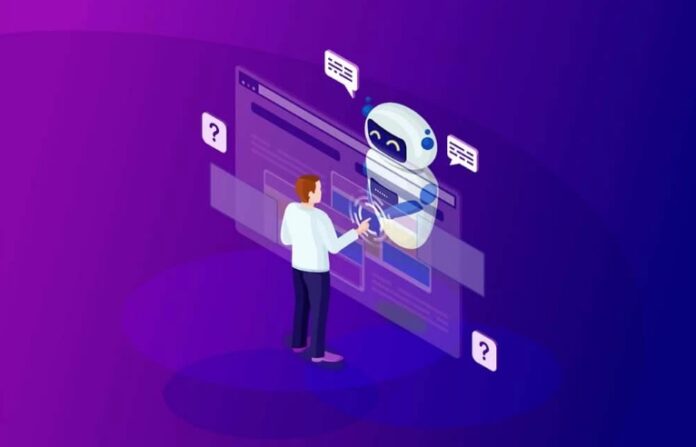
A chatbot is a software robot that can reproduce natural language and interact with users through automated conversations. Chatbots allow you to receive a unique answer or a service.
The operating model is simple: First, users formulate their queries in natural language via a voice or text interface. Second, the chatbot receives the request, and its engine interprets it to understand it. Third, the chatbot provides a unique and qualified answer to the user’s query. The answer may be generic (i.e., the same for everyone), contextualized (adapted to the context, for example, at a given time and place), or customized (adapted to users, for example, by providing them with their bank balance).
Chatbot technology has now reached a sufficient stage of maturity for many different types of customer relations, which is the most frequent use of chatbots to date. Chatbot technologies are available via several digital channels: text (SMS, web pages, messaging applications, mobile applications, etc.) or voice (connected speakers, embedded services on mobiles, etc.).
Chatbot services have enormous potential. A good chatbot must be reactive, proactive and goal-oriented, deliberative, continual, adaptive, communicative, and mobile. Companies must carefully consider what implementation challenges may lie ahead, just as they must with any new technology. This post presents some of the key design principles and features to consider while designing a chatbot.
Personality/persona
Do you know that some conversations leave an impact on us while others don’t? It’s because of the persona of the person we are having a conversation with! This applies to chatbot conversations as well. Even if you don’t intend to build a personality for your chatbot, users will perceive one. So, it’s recommended that you build a personality for your chatbot.
Two-sided conversations
It is important for a chatbot to not simply provide scripted responses but to promote two-way, realistic conversation. Chatbots should not just “read from” a script and deliver a sequence of one-way communications. Instead, conversations should be dynamically generated based on inputs and not just following a sequence of responses.
Therefore, companies must ensure that the chatbot and the users play active roles in the conversation two-sided. To achieve this, the chatbot can pose more questions to understand the end-user and give the most accurate and relevant answers. Asking questions prompts the users to give more information and keeps them engaged. You must also be careful that your inquisitive bot doesn’t ask too many questions and bother users after a certain point.
User preferences
Sometimes, the chatbots have to deal with repeated users who use the chatbot again after a few days. They might ask some follow-up questions regarding their previous inquiries. If the bot doesn’t remember the inputs that it previously took from the user, the user will be frustrated. Therefore, the chatbot designers must consider these users and build the chatbot smart enough to remember user preferences and previous conversations. The chatbot should infer customer personality traits and understand sentiment and tone during an interaction to deliver a personalized experience.
Precise and accurate
It’s not a good practice to overload the user with too much information because this hinders the conversational flow and confuses the user as it’s difficult to grasp too much information in one go. Providing accurate and useful responses is essential and historically implemented in all chatbot designs by matching user input with pre-programmed scripts. This architecture is still prominent with chatbots today.
However, this approach is limited to the programmed scope of user input and does not respond well to input outside of this scope. However, implementing this can be time and labor-intensive due to the continuously emerging user patterns and expanded ranges of input from users. Companies can use machine learning (ML) and artificial intelligence (AI) architectures to overcome these challenges to process input and response patterns.
Omnichannel and CRM integration
The chatbot should converse seamlessly across multiple digital channels and retain data and context for a seamless experience. The aim is to retain consistency across all communication channels. An ideal chatbot has to be thoroughly integrated with Customer Relationship Management (CRM). It must be capable of handling simple, real-time, and routine tasks like changing a name or a password and should have the capacity to orchestrate workflows.
Authentication and authorization
It is not always necessary to confirm the user’s identity (authentication). When a user requests assistance, such as on a shopping website, authentication is usually not required. The system does not need to know who the user is or have access to their data in this case. When a user requests assistance and the chatbot uses the user’s data, the situation is different. Chatting with a banking chatbot about an account balance is a good example. Authentication and authorization are required in this case to ensure that a user has valid and secure login credentials.
The following are the other key features of the best chatbot that make a big difference.
- User intent – Ability to detect the user intent in a sentence to understand the user request and trigger actions.
- Sentiment analysis – Detect the sentiment of user input, from very negative to very positive, and respond accordingly.
- Next best action – Automatic recommendations for next-best-actions.
- Analytical – Ability to suggest and recommend products and services for a user based on current or previous interactions.
- Multilingual – Communicating with the customers’ preferred language, increasing the reach, and boosting communication globally.
- Language preference – Automatically get the language of user input to adapt the conversation and switch language smoothly.
- Seamless takeover – Ability to seamlessly hand off the conversation to a live agent if the queries are too complex for a chatbot to resolve.
- Platform-independent – Ability to integrate with 3rd-party applications.
- Robust API – Capacity to fetch user information from different applications.


















